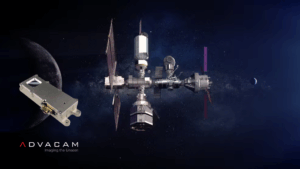Quantum imaging detection and track visualization of heavy charged particles by the miniaturized MiniPIX-TimePIX camera. NASA and the European Space Agency ESA make use of our tools for particle tracking and high-resolution dosimetry and detection of space radiation. Images below demonstrate the sensitivity and resolving power of our detectors, which can be used for various applications such as hadron radiotherapy.


Resolving power for charged particle detection with spectrometric and directional sensitivity. Single particle tracks produced by protons, alpha particles and carbon and silicon ions recorded by a MiniPIX-Timepix (300 um silicon) detector. The micro-scale pixelated tracks are sensitive to the particle type, energy range (energy loss) and direction. The per-pixel spectrometric response is shown in color by the vertical bar. Data measured at the NPI-CAS cyclotron Rez/Prague, and at the medical ion synchrotrons HIT-Heidelberg/Germany and HIMAC-Chiba/Japan.


Identification and classification of events by the MiniPIX-Timepix camera displaying data for electrons, protons and 4He, 12C and 28Si ions at selected beam energies. Distinct regions of particle species are resolved. Overlapping occur between groups at extreme low or high energies.


Illustration of directional detection and particle tracking in Timepix for energetic charged particles. Micro-scale pattern recognition analysis of the registered signal (cluster of pixels – shown in red) enables deriving the particle linear energy transfer (LET) from the measured path length, deposited energy along the track. Directional information is derived from the registered entrance and exit vertex points and the polar (α) and elevation (β) angles of the particle trajectory.



